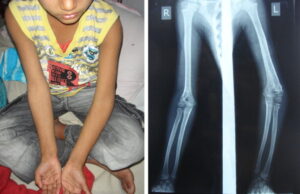What is a congenital hand anomaly?
A congenital hand anomaly is a hand or arm deformity that is present at birth. The unborn baby develops the anomaly early during pregnancy. Some of the more common anomalies include:
- having more or fewer than five fingers
- fingers that will not bend or will not straighten
- fingers that are joined together
- bones in the hand or arm that are too short or missing
Congenital hand anomalies are sometimes diagnosed by ultrasound during pregnancy. But when they are not, they often come as a surprise to parents.
The cause of congenital hand anomalies is unknown
The cause of a congenital hand anomaly cannot usually be determined. In most cases, we do not know exactly why it happens. Sometimes a congenital hand anomaly is directly associated with a type of syndrome or is passed along through families. Sometimes it “just happens” without explanation.
Congenital hand anomalies are rare. The mother does not cause hand anomalies by something she did or did not do during pregnancy. Parents who have one child with a congenital hand anomaly will usually not have another.
Treatment options for a congenital hand anomaly
Children with congenital hand anomalies function extremely well, often without any intervention. Some children may function better with surgical correction, therapy, or simply with adaptations or changes to their environment.
If your child is doing everything they want to be doing and are keeping up with their friends, then treatment is not necessary. Your child’s needs will be re-evaluated as they grow and develop new interests.
The most important goal of any treatment is to help the child function as independently as possible. If your child is having difficulty doing the things they want to do because of a congenital hand anomaly, treatment options may be available. Talk to your doctor about your child’s issues.

